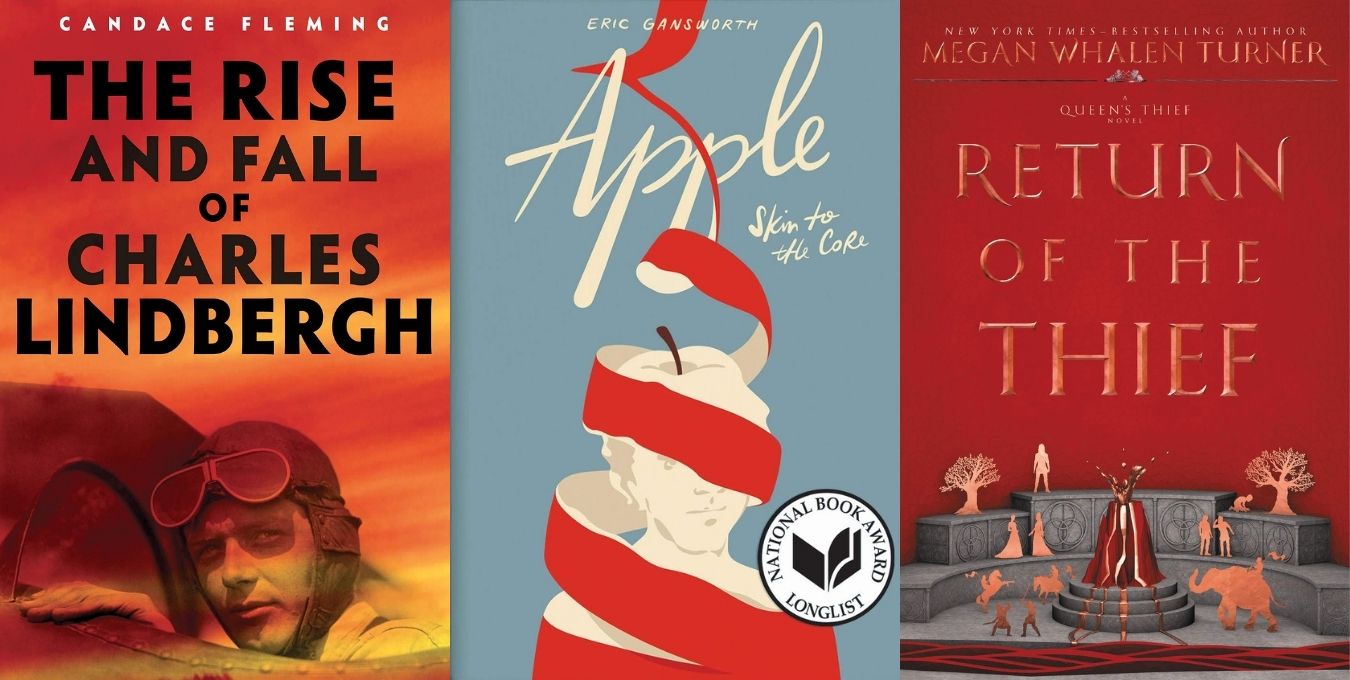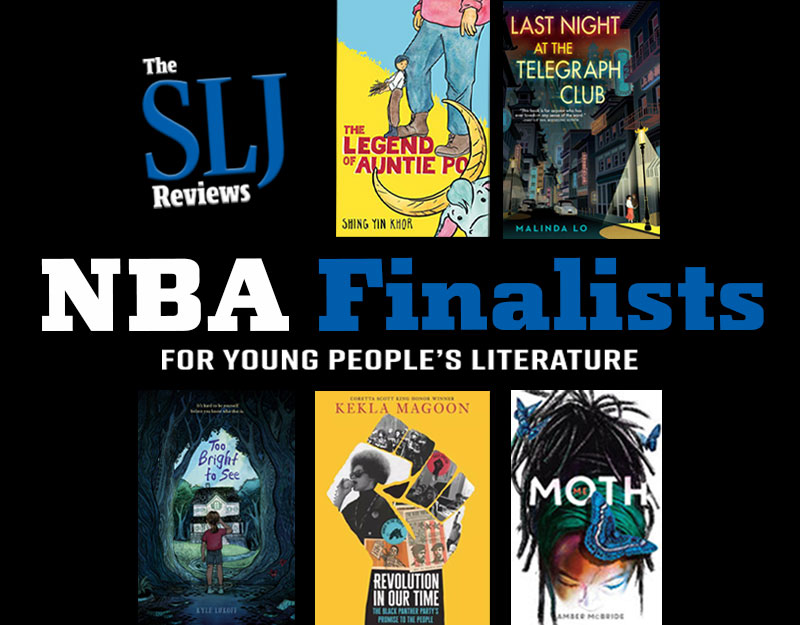The Default in Our Stars: A Guest Post by Linda Sue Park
On occasion the posts I host here on my blog inspire me to do better. Linda Sue Park has that ability.
Book review journals, book reviewers, book bloggers everywhere: I’m looking at YOU
By Linda Sue Park
“When race is a factor or is important to the story, we expect our reviewers to reflect that in their assessment.”
This is a quote from a response I received when I wrote to the editor of children’s book reviews at a major newspaper. I had written to ask them to change their policy and identify the race of every character mentioned in a book’s review. The response above reflects exactly the attitude that perpetuates the White Default–which is a crucial buttress of white supremacy.

When is race a factor in a story? Here is a simple example of the White Default at work. (And please note: I am NOT dragging any authors here. This is about reviews and review-journal policy.) In THE HATE YOU GIVE, by Angie Thomas, Starr goes to a fancy prep school. Professional reviews all cite her race, because in the book, ‘race is a factor’. In E. Lockhart’s THE DISREPUTABLE HISTORY OF FRANKIE LANDAU-BANKS, also a well-reviewed and award-winning title, Frankie goes to a fancy prep school. NONE of the reviews mention her race, because the book isn’t ‘about race’. But the fact that Frankie is *white* accounts in large part for why she gets to go to that school, and how she moves through her world. To note Starr’s race but not Frankie’s is to ignore centuries of white privilege: Frankie’s race is ‘a factor’ as much as Starr’s is, but in describing her story, the White Default in reviews serves to render her race meaningless.
ADVERTISEMENT
ADVERTISEMENT
(And yes, authors identifying the race of their characters in the books themselves is another issue, for another essay.)

There’s more. Books where ‘race is a factor’ are almost all inevitably about people of color. To cite the race of characters in those books and no others posits whiteness as ‘normal,’ with every other race seen as a deviation. It also positions race as the defining factor of those characters’ lives. While race is indeed the defining element of U.S. history, society, and culture, for individuals, it is always one of myriad facets. In PIECING ME TOGETHER, by Renée Watson, Jade is a black girl from a rough neighborhood—and an artist who is gifted at learning languages and longs to travel. When reviews mention her race but not that of parallel white protagonists, they perpetuate the unconscious racism of limiting individuals by their ethnicity.
This policy is more than just disappointing. It is actively harmful, because what it does is support and reinforce the status quo. It’s especially easy to see these days how dangerous the status quo is to Black people, and how people everywhere are demanding a change.
In the case of book reviews, the solution is a simple one: Every review should note the race of all book characters mentioned, including those who are white.
It does not have to be a Big Thing. With a little practice and consideration, it can be done quickly and deftly. To my knowledge, only one major review journal has adopted this policy. Several years ago, Vicky Smith, children’s book editor at Kirkus Reviews, began requiring that all her writers mention the race, ethnicity, or skin color of book characters named in their reviews.
Smith suffered through a storm of backlash, made some mistakes, learned from them, and stuck to the policy. Here is a link to a column in which she addresses the reasons for the decision and her responses to the objections she has received.
Kirkus: Unmaking the White Default – Writing About Race

ADVERTISEMENT
ADVERTISEMENT
I’ll say it again: By not mentioning when characters are white, reviews perpetuate the White Default, thereby supporting the systemic injustice of white dominance. I’m deeply dismayed that no other major review outlet has followed Kirkus’s lead.
The time to make this change will never be better. Identify the race of all characters in reviews. Awkward at first, perhaps, but the Kirkus experience evinces how quickly it normalizes for both reviewers and readers.

Everywhere, white and white-adjacent people are asking, “What can I do to help?” For the major reviewers and review journals, most of which are bastions of whiteness, this is a place to start.
Linda Sue Park is the author of many books for young readers, including the 2002 Newbery Medal winner, A Single Shard, and the NYTimes bestseller A Long Walk To Water. Her most recent title is Prairie Lotus, a historical-fiction novel.
She would like to thank the following for their input and inspiration: K.T. Horning, Olugbemisola Rhuday-Perkovich, John Sellers, Vicky Smith, Renée Watson.
Incredible thanks to Linda Sue Park and John Sellers at HMH for allowing me to run this piece today.
Filed under: Guest Posts
About Betsy Bird
Betsy Bird is currently the Collection Development Manager of the Evanston Public Library system and a former Materials Specialist for New York Public Library. She has served on Newbery, written for Horn Book, and has done other lovely little things that she'd love to tell you about but that she's sure you'd find more interesting to hear of in person. Her opinions are her own and do not reflect those of EPL, SLJ, or any of the other acronyms you might be able to name. Follow her on Twitter: @fuseeight.
ADVERTISEMENT
ADVERTISEMENT
SLJ Blog Network
The Moral Dilemma of THE MONSTER AT THE END OF THIS BOOK
Winnie-The-Pooh | Review
Parsing Religion in Public Schools
Post-It Note Reviews:
ADVERTISEMENT








The Kirkus link doesn’t work.
Whoops! My mistake entirely. It should work now.
Yes, it does! Thank you!
I’ve been considering so many of my assumptions and points of view these days. I’m white and I’m a writer/illustrator of picture books and so this discussion is very relevant to me and my work.
The link just takes me to these comments, not on what you said Elizabeth.
That’s very strange. It’s working on my end. Are you talking about the link with the image or the link attached to the words “Kirkus: Unmaking the White Default – Writing About Race”?
“In the case of book reviews, the solution is a simple one: Every review should note the race of all book characters mentioned, including those who are white.” YES! I have been inconsistent with this in the past, and pledge to be consistent moving forward. Thank you for this important post, Linda Sue.
“Identify the race of all characters in reviews. Awkward at first, perhaps, but the Kirkus experience evinces how quickly it normalizes for both reviewers and readers. Everywhere, white and white-adjacent people are asking, “What can I do to help?” For the major reviewers and review journals, most of which are bastions of whiteness, this is a place to start.” Powerful words, Linda Sue, and ones I haven’t seen elsewhere. THANK YOU!
The white default is in a lot of industries. I used to work in community newspapers and that was the default in the crime stories. Only people of color were identified. It took several years to change it at mine. There are likely papers today that still do it.
Thoughts on noting the race of the human subjects in works of nonfiction?
Should reviewers of Candace Fleming’s Lindbergh biography note Lindbergh’s race (a huge factor in his life) or as the audience for the reviews are librarians and teachers do we reviewers assume a level of historical knowledge in our readers?
An Ida B Wells bio review probably mentions her race but would a bio of Joseph Pulitzer mention his? This is a slightly different form of white defaulting since the reader’s prior knowledge of the historical person’s race is assumed whereas with fictional characters we have no knowledge of race prior to reading the work.